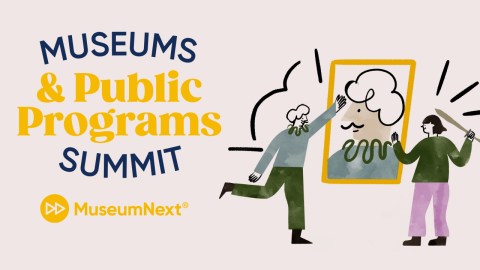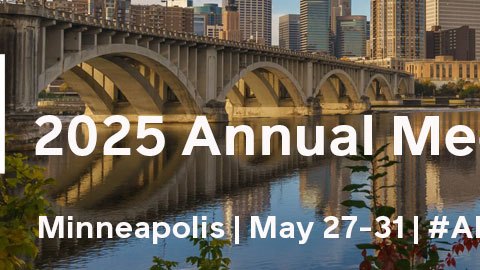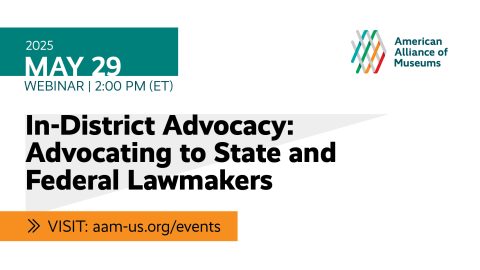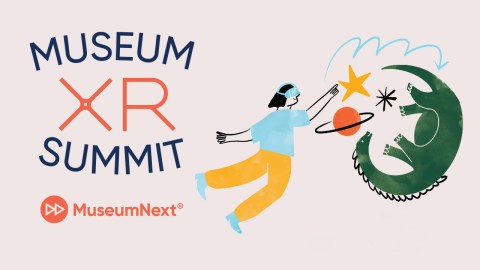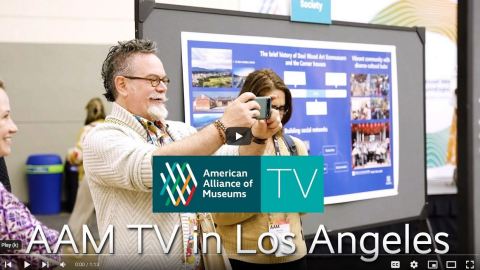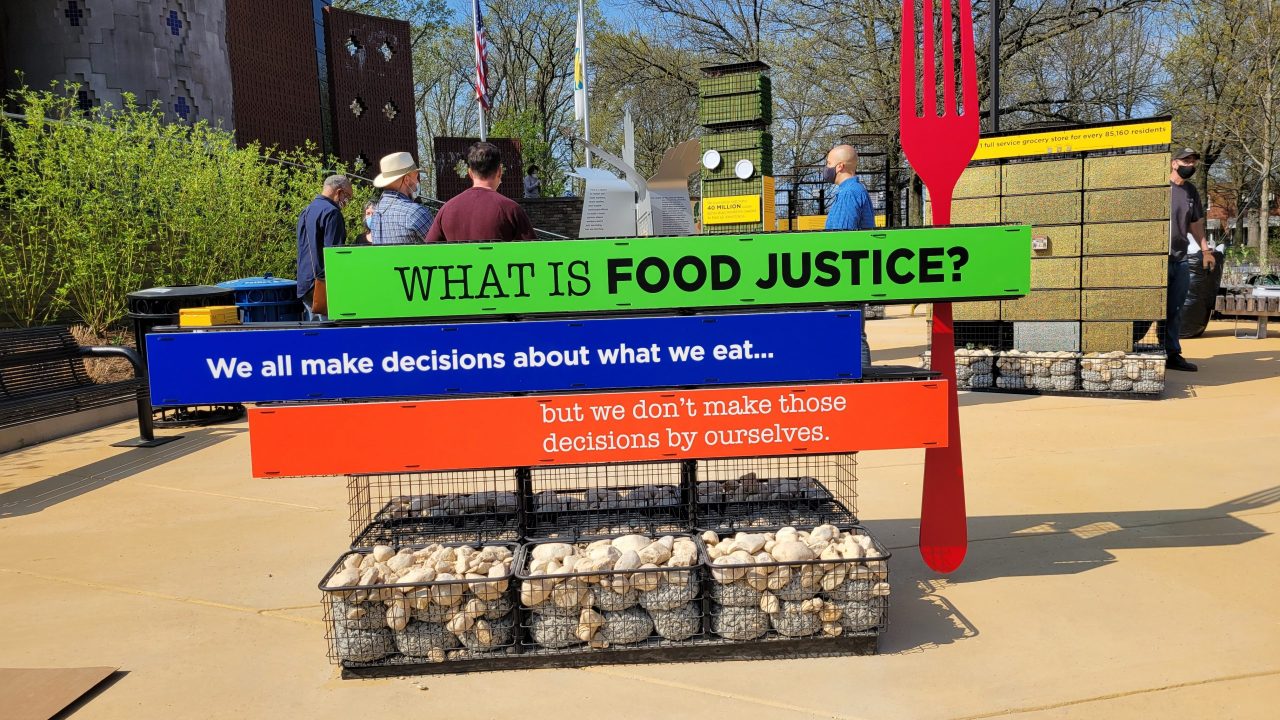
During the COVID-19 pandemic, museums have proven themselves to be part of the essential infrastructure of our country, supporting their communities in myriad ways. Sometimes this support is grounded in mainstream museum practice—exhibits and education, for example—but often it deploys museum resources in creative ways. In today’s guest post Melanie A. Adams, Phd, Director of the Anacostia Community Museum in Washington, DC, tells us how she and her staff are helping to address food insecurity in their community with both traditional and nontraditional approaches to their work.
For more stories of how museums are supporting vulnerable communities during the COVID-19 crisis, along with a framework to help your museum identify what you can do, download your free copy of TrendsWatch: Navigating a Disrupted Future.
In March 2020, the Anacostia Community Museum (along with the rest of the Smithsonian) shut our doors to protect our staff and visitors from the spread of a new and deadly virus that had taken over the world. For us, as for many others, the first few weeks were consumed with learning how to telework and continuously watching the news to learn more about the virus. Once we felt more settled, we turned our attention to how to best serve the needs of the community while keeping everyone safe.
The Smithsonian’s Anacostia Community Museum (ACM) was founded in 1967 during the racial unrest that took place in urban centers as people fought for their basic civil rights. Recognizing a need to serve the African American community of DC, Secretary Ripley worked with the community to select a site in Anacostia, a predominately African American area located east of the river. While only a few miles from the Capitol and the National Mall, the communities east of the Anacostia River were poor in resources, but rich in history and culture. ACM’s founding director, John Kinard, came from a community organizing background and created a museum powered by the people and their stories.
For the past 54 years, ACM has continued to serve the community through its diverse offerings of programs and exhibits using a hyper-local lens to address national programs. From the notorious 1969 exhibit, The Rat: Man’s Invited Affliction (with live rats) to our most recent exhibit, Food for People: Eating and Activism in Greater Washington, the museum continues to address relevant topics using the voice of the community.
In May 2019, the ACM advisory board approved a new mission and vision for to the museum.
Together with local communities, the Anacostia Community Museum illuminates and amplifies our collective power. –ACM Mission.
Urban communities activate their collective power for a more equitable future. –ACM Vision
As we began to think about how we could best serve our community during the pandemic, our mission and vision served as the roadmap guiding our development of new programs and exhibits. This helped us to think beyond our building and focus on the needs of the community as we experienced the pandemic and the many issues it brought to the surface.
Building on the idea that communities of color have always needed to learn resilience to thrive and survive during challenging times, we developed an online collecting initiative called Moments of Resilience, asking people to share stories of how they were being resilient during the pandemic. ACM received inspiring stories from all over the country (and continues to collect stories on our website at https://anacostia.si.edu/collection/moments-resilience). The stories tell of how people were rediscovering former hobbies, getting to know their neighborhoods, and appreciating the essential workers that kept everyone fed and receiving mail. While ACM’s first foray into the digital world went well, we knew we could do more.
Thinking about our own personal angst around the new environment we found ourselves in, ACM developed a virtual program series called Take Time Thursdays. This new series encouraged people to take 30 minutes for themselves each week whether that was learning deep breathing techniques, how to take care of their plants, or to just listen to 30 minutes of great music. On the surface, Moments of Resilience and Take Time Thursdays seemed like a departure from traditional museum programs, but they reflected our mission to amplify our collective power and, in this case, that power was the ability be resilient and to find ways to thrive in moments of uncertainty.
In May 2020, the ACM staff joined the country in mourning as we watched yet another black man lose his life at the hands of law enforcement. The killing of George Floyd prompted many museums to make statements of support, but also to think about how they were going to address issues of racial equity in the future. As I mentioned in the introduction to this post, ACM was founded because of the racial unrest in the country and is uniquely suited and prepared to address these issues in a way that centers the community. As ACM began grappling with how to address racial inequality, we once again turned to our foundational documents and this time focused on our vision to create a more equitable future. Using this vision as our roadmap, we decided to explore five community issues over the next five years—food, housing, environment, education, health—through the lens of racial equity, starting with the food insecurity brought to light by the pandemic.

In 2021, ACM launched Our Food, Our Future, a yearlong exploration of food history, culture, and justice in the greater Washington region. This initiative provides a framework for telling the history of food activism, presenting the perspective of the essential workers who keep food on our tables, and exploring the fragility of our food system. While increasing awareness is important, the dire effects of food insecurity in our own neighborhood made it clear that museum needed to take action as well. We discovered an opportunity to help our community more directly through conversations with a community contact, Mark Buchner. He told us about the ground-breaking work of Feed the Fridge, a program that places refrigerators stocked with healthy meals from local restaurants in DC communities that have high levels of food insecurity. The community is welcome to visit the fridge and take a meal, creating no-barrier access to meals for those who need one. This program seemed like a perfect way to “walk the walk” during our year of food justice awareness. The response to our fridge, which we placed in our parking lot, was overwhelming. Since its arrival in late January, the fridge has provided 500 meals a week to members of our community and will continue to operate through 2022. The partnership with Feed the Fridge is an example of the action-oriented focus expressed in ACM’s vision to create a more equitable future. Museums are not social service agencies, but that does not mean we cannot partner with the organizations doing the work on the ground to amplify their work in service of our communities.
As the pandemic continued in 2021, ACM wanted to find ways to serve the audiences surrounding the museum. While the museum had created robust virtual programming, we knew we were not serving everyone in our local community. To that end, we decided to create two parts to our new exhibit, Food for the People: Eating and Activism in Greater Washington. The first part is outdoors and focuses on the issues of food insecurity in conjunction with Our Food, Our Future as part of the Transforming America Initiative. This outdoor exhibit provides visitors with the statistics associated with food insecurity in the metro area along with the opportunity to learn about the local food workers who continue to keep the food system running. It encourages people to learn about the issue and provides suggestions for how to put this knowledge into action. The indoor portion (opening date TBD) focuses on the history of food activism in the region told by the people and organizations that participated in the fight for equality.
As the pandemic wears on and there is some return to normalcy, ACM is excited to continue to discover new ways to engage our community, whether virtually, at our museum, or in the community. The pandemic has encouraged us to lean more deeply into our new mission and vision and continue to discover how best to use our resources to put our mission and vision into action.

